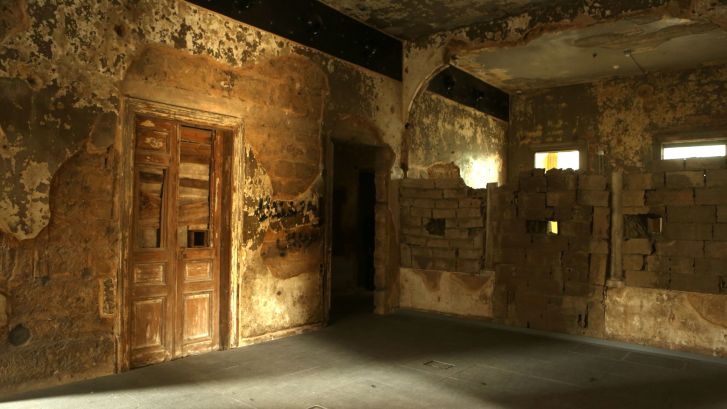Beirut – “Why did the Lebanese people fight each other and commit all this cruelty against their country?” This is a question that visual artist Zeina al-Khalil has always asked herself. She did not want to surrender to this sad reality and decided to organize an exhibition called, “Sacred Disaster: Healing Lebanon,” at Beit Beirut, a building that was a major witness to the Lebanese civil war.
It is true that Lebanon survived the war and rapidly shifted to peace, but according to Khalil, the country must live the long healing process like any other patient before he resumes his daily life.
The exhibition that runs from September 18 to October 26. It occupies the three-storey Barakat building (Beit Beirut) in the Sodeco area in the Ashrafieh district. The building’s owner wanted to turn it into an artistic quarantine-like space where “patients” would be isolated for 40 days before returning to the real world. She wanted to treat the people with the main medicine of love.
Khalil hung 20 charcoal drawings on the first floor of the exhibit to address guests with their black ink.
“These drawings bring hope even though they represent scenes that I bore witness to in Lebanese regions that suffered war and total destruction. Ruined buildings remained as real witnesses to what happened in Lebanon,” Khalil, who holds a Masters in Fine Arts from New York University, told Asharq Al-Awsat
The Lebanese artist drew inspiration for her work from the Shaker palace in the town of Souk el Gharb, the Khiam detention camp in southern Lebanon, and the Grand Hotel in Sawfar, as well as her hometown, Hasbaya where her family’s home was occupied by the Israeli army for more than 20 years, and was turned into a detention camp later.
“It is not true that we have to destroy the past and build a new history to get rid of our effects on us. However, we have to review our cruel past to learn the necessary lesson to be cured from diseases that live with us, such as religious fanaticism and surrendering to party leaders and politicians.”
Khalil reflected her optimistic view in her ceramics and stone sculptures. Her golden rules “love, mercy, tolerance” were written in Arabic on a white background. She spread them on the floor of “Beit Beirut” through 324 pieces complimenting the remains of mosaic tiles covering the floor of the building, which dates back to the early 1920s.
“It is like a language of communication between the past and the present. Some pillows have been placed around the paintings so that the visitor can sit, contemplate and live the healing process through a combination of sculptures, paintings and music.”
Poetry is also been present in the exhibition her works where she spread verses embracing love and Beirut.
